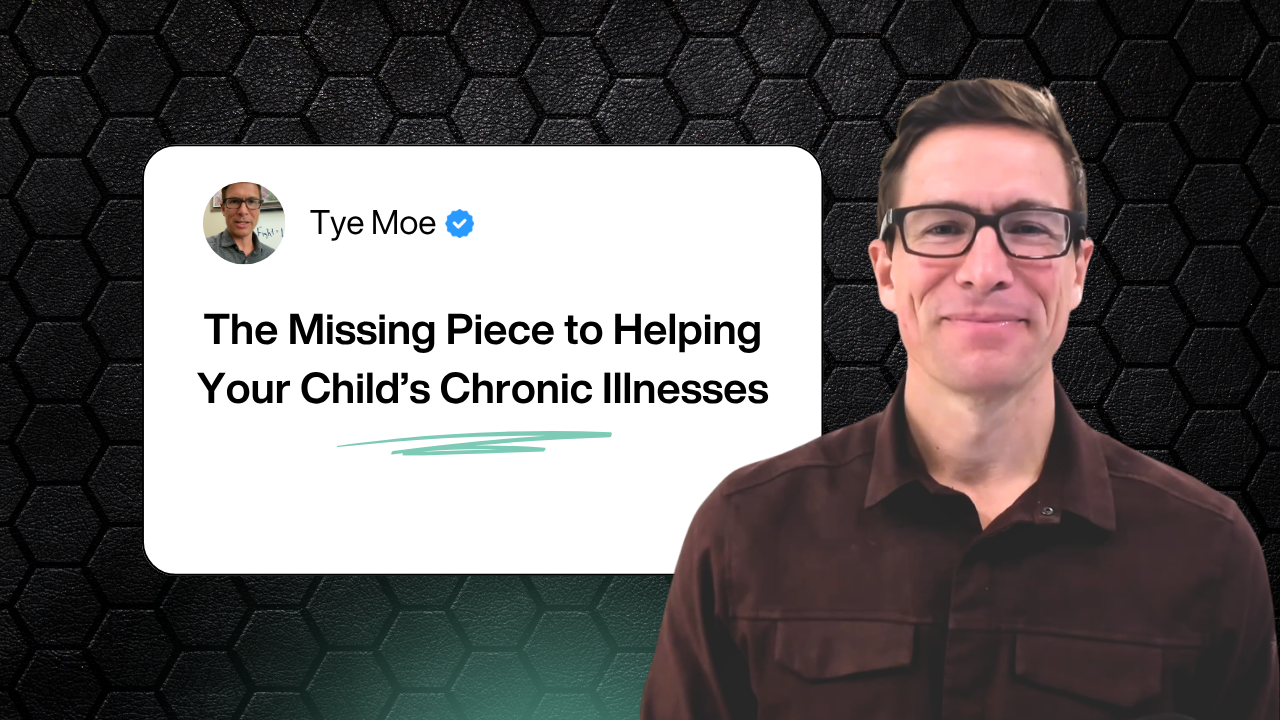As parents, we all want our children to thrive — to grow confident, healthy, and happy in every sense of the word. But in today’s fast-paced, overstimulating world, more and more kids are struggling. They struggle to focus, to manage emotions, to fall asleep, or even to feel calm in their own skin.
Many parents try everything — from therapy and supplements to diet changes and structured routines — but still feel like something deeper is missing.
That missing piece often lies in the body’s control center: the nervous system.
The Foundation of Every Function
Your child’s nervous system is the master control system of the body. It’s what allows the brain to communicate with every cell, muscle, and organ. It directs growth, healing, digestion, sleep, focus — everything.
When the nervous system is in balance, it works like a finely tuned orchestra. Every part plays in harmony, and your child moves through the world with ease. But when it’s out of sync — when the body is stuck in a state of stress — everything feels offbeat.
That’s when we see the meltdowns that seem to come out of nowhere, the anxious thoughts before bedtime, or the stomach aches that just don’t go away.
The Two Sides of the Nervous System
Think of the nervous system like a car with two pedals — the gas pedal and the brake pedal.
-
The gas pedal (sympathetic system) helps us go — it’s what kicks in during activity, play, or moments of excitement.
-
The brake pedal (parasympathetic system) helps us rest, digest, and recover — it’s what allows the body to calm down, sleep, and heal.
In an ideal world, these two systems would work together, constantly balancing each other out. But for most kids today, life presses the gas pedal too often — from early morning rushes to overstimulating screens, packed schedules, and constant sensory input.
Over time, their brake pedal wears down. The body forgets how to slow down, how to rest, how to self-regulate.
When the System Gets Stuck
When the nervous system stays in “go” mode for too long, kids start to show signs — and these signs can look different at every age.
-
Infants may struggle with colic, reflux, difficulty latching, or restless sleep.
-
Toddlers may have frequent ear infections, constipation, or emotional meltdowns that seem bigger than expected.
-
School-age children might develop sensory sensitivities, attention issues, or anxiety.
-
Teens may begin to feel burned out, anxious, or emotionally drained.
These aren’t isolated problems — they’re often symptoms of nervous system dysregulation.
Hannah’s Story
Eight-year-old Hannah came into our office recently with a mix of challenges: anxiety, sensory issues, frequent illness, and coordination struggles. Her mom had tried everything — occupational therapy, functional medicine, supplements — and while there were brief improvements, they never lasted.
When we ran gentle scans of Hannah’s nervous system, we found something telling: her brake pedal wasn’t working properly. Her body was stuck in stress mode — always ready to fight, flee, or freeze.
Once we started addressing that underlying imbalance through neurologically focused chiropractic care, her body began to respond differently. Sleep improved. Her immune system strengthened. Her anxiety started to calm.
It wasn’t magic — it was her body finally doing what it was designed to do once the communication lines were clear.
Why Traditional Approaches Miss the Mark
Traditional care often looks at symptoms in isolation — one specialist for anxiety, another for digestive issues, another for coordination. But when the foundation (the nervous system) isn’t balanced, those surface-level treatments can only go so far.
That’s why kids like Hannah — and so many others — improve temporarily but eventually plateau. Their nervous system isn’t yet ready to accept or sustain the change.
When we begin by calming and regulating the nervous system, everything else can finally click into place.
Helping Your Child Regulate Naturally
Supporting nervous system regulation doesn’t always mean adding more — it often means helping your child do less, rest more, and reset intentionally. Here are a few gentle ways to start:
-
Prioritize Calm Connection: Physical touch, deep breathing together, and calm routines help stimulate the vagus nerve (your body’s brake system).
-
Protect Rest and Sleep: Sleep is when the nervous system heals and integrates. Guard it like gold.
-
Reduce Overstimulation: Limit screens and chaotic transitions. Kids need stillness to feel safe.
-
Get Outside: Movement in nature naturally balances the nervous system.
-
Consider Nervous System-Based Care: Neurologically focused chiropractic adjustments can directly support balance between the gas and brake pedals.
Restoring Balance Changes Everything
When your child’s nervous system starts to regulate, everything improves — from sleep and digestion to emotional stability and immune health. Their body learns to move fluidly between “go” and “rest.”
You begin to see fewer meltdowns. More laughter. Better focus. Stronger resilience.
And perhaps most importantly — your child finally feels at home in their own body.
Final Thoughts
Your child’s potential isn’t hidden in a diagnosis or a supplement — it’s built into their body’s design. When we help the nervous system do what it’s meant to do, healing doesn’t have to feel like a constant uphill battle.
If this resonates with you — if you’ve been searching for a deeper answer — it might be time to look beneath the surface. At our office, we focus on helping kids and families rebuild that foundation of calm and connection through neurologically based chiropractic care.
Because when the nervous system heals, everything else can finally follow.


